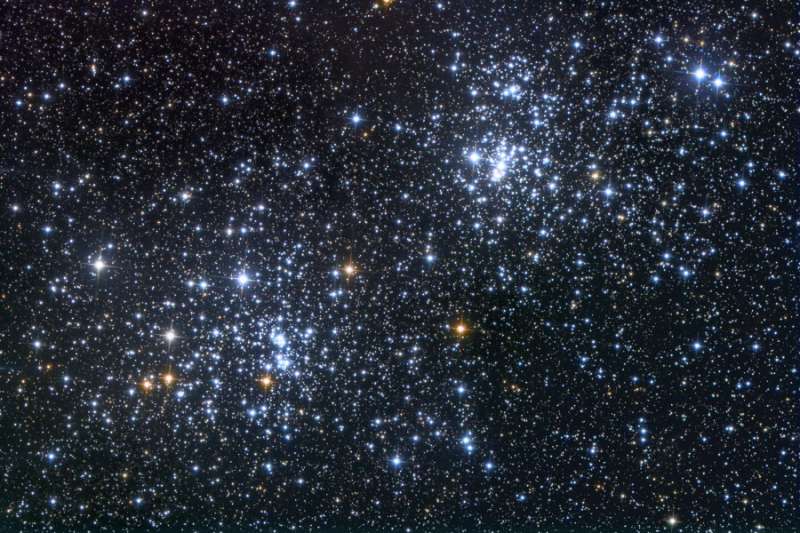 |
Астронет: Астрономическая картинка дня Двойное скопление в Персее http://variable-stars.ru/db/msg/1232626/eng |
Credit & Copyright: Roth Ritter
(Dark Atmospheres)
Explanation:
Some 7,000 light-years away, this pair of open or galactic
star clusters is an easy
binocular target,
a lovely starfield in the
northern constellation
Perseus.
Also visible to
the unaided eye from dark sky areas,
it was cataloged in 130 BC by Greek astronomer
Hipparchus.
Now known as
h and
chi Persei, or
NGC 869(above right) and NGC 884, the clusters
themselves are separated by only a few hundred light-years and
contain stars much younger and hotter than the Sun.
In addition to being physically close together, the clusters' ages
based on
their individual stars are similar - evidence that
both clusters were likely a product of the same
star-forming region.
digg_url = 'http://apod.nasa.gov/apod/ap090103.html'; digg_skin = 'compact';
Authors & editors:
Robert Nemiroff
(MTU) &
Jerry Bonnell
(USRA)
NASA Web Site Statements, Warnings,
and Disclaimers
NASA Official: Jay Norris.
Specific
rights apply.
A service of:
LHEA at
NASA /
GSFC
& Michigan Tech. U.
